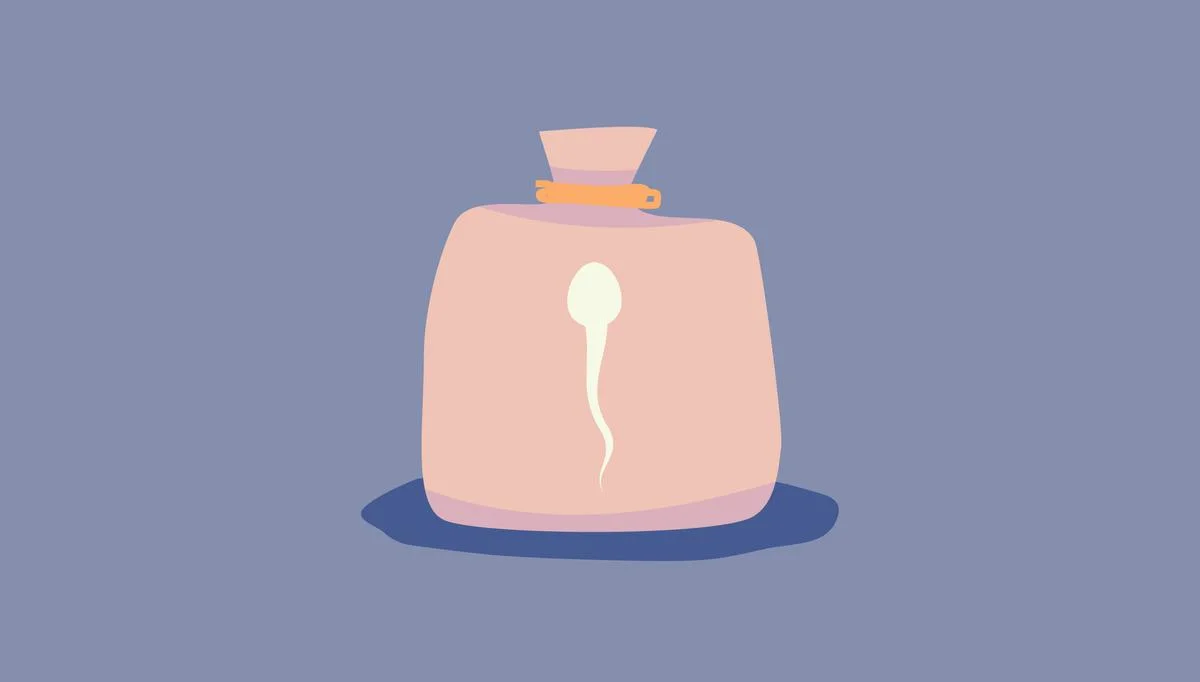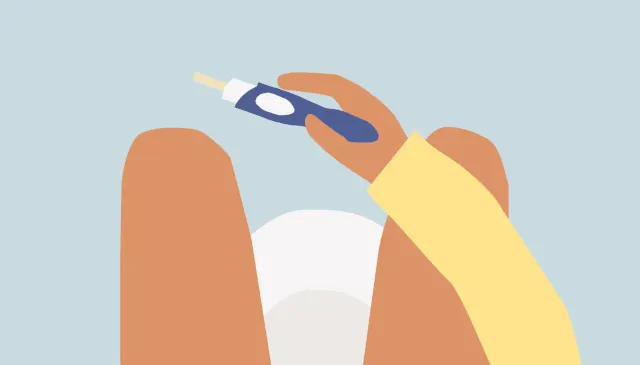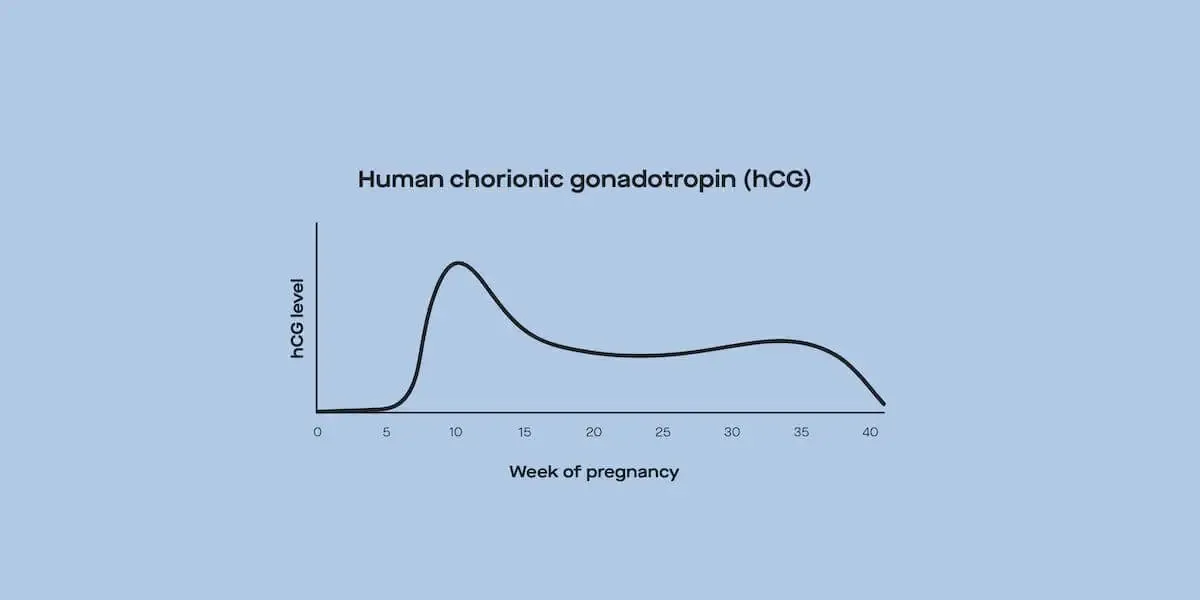Here's what we'll cover
Here's what we'll cover
Many medical conditions or disorders can affect normal sexual development. One of these is a rare genetic disorder called Kallmann syndrome (Witchel, 2018).
When someone has Kallmann syndrome, their body has a difficult time making the main male and female sex hormones—namely, testosterone, estrogen, and progesterone. When these hormones are absent, the body cannot go through puberty properly and doesn't develop things like public hair, breasts, voice changes, and genital growth. This is why Kallmann syndrome is typically diagnosed when a child is hitting puberty (Sonne, 2021).
Let’s learn a bit more about this rare condition.
What is Kallmann syndrome?
Kallmann syndrome is a congenital (meaning present at birth) genetic condition. Doctors who specialize in it, such as endocrinology experts, call it a “congenital hypogonadotropic hypogonadism condition” or “idiopathic hypogonadotropic hypogonadism.” These kinds of conditions are known for stopping someone from going through puberty (Sonne, 2021).
Kallman syndrome, in particular, partly or completely blocks the development of the male and female sex characteristics that typically emerge during and after puberty. For example, girls with Kallmann syndrome will not begin to menstruate, a condition known as amenorrhea. It can also reduce or eliminate a person’s sense of smell. This is known as hyposmia or anosmia.
In people with Kallmann syndrome, a structure in the brain called the hypothalamus does not correctly make or release something called gonadotropin-releasing hormone (GnRH). In other words, it causes a GnRH deficiency or impairment. This hormone helps stimulate the release of male and female sex hormones from the male and female genitalia. It also affects hormone activity in other parts of the brain, such as the pituitary gland (Stamou, 2018).
How common is Kallmann syndrome?
Kallmann syndrome is very rare; around 1 in 48,000 Americans has it. It’s about four times more common in men than in women. That’s because it’s an X-linked genetic condition, meaning it’s passed on via the X chromosome, of which men have two copies and women one (Sonne, 2021).
Kallmann syndrome in boys
In boys, Kallmann syndrome may first present as cryptorchidism, also known as undescended testicles (Sonne, 2021). However, undescended testicles—when an infant’s testicles fail to “descend” from the abdominal cavity into the scrotum—is a common pediatric condition (Rodprasert, 2020). By itself, this isn’t a strong predictor of Kallmann syndrome.
The main signs of Kallmann syndrome tend to appear around the age of puberty. In males, the syndrome can reduce or prevent the normal development of pubic hair, the testicles, the penis, or a male’s voice. Some people with Kallmann syndrome also have a micropenis. It can also prevent the normal growth of facial or body hair, muscle development, height, and stature (Sonne, 2021; Scavone, 2019).
Along with these signs, many males with Kallmann syndrome will also have an impaired sense of smell. Other signs include craniofacial abnormalities, such as cleft palate or cleft lip. It can also cause infertility (Kim, 2015; Sonne, 2021).
Kallmann syndrome in girls
Kallmann syndrome can disturb or prevent menstruation. It also prevents or reduces the development or maturation of secondary female sex characteristics, including normal nipple and breast development, the growth of pubic and underarm hair, and a widening of the hips.
Like males, many women with Kallmann syndrome will have an impaired sense of smell. They are also at increased risk for craniofacial abnormalities—such as cleft palate—and fertility difficulties (Kim, 2015; Sonne, 2021).
Kallmann syndrome genitalia
Many of the signs and symptoms of Kallmann syndrome show up as atypical or unusual development of the genitals (Sonne, 2021). In men, the testicles or penis may be undersized, and in some cases, extremely undersized. There may also be unusual anatomical features, like a urethra (the opening that lets out urine) that forms on the underside of the penis rather than on the tip of the penis (Kim, 2015).
In women, Kallmann syndrome may lead to a vulva that has not undergone enlargement or pigmentation changes that are typical following puberty (Zhao, 2020).
Kallmann syndrome causes
Kallmann syndrome is a genetic condition. Many different genetic mutations—about 40 so far—have been linked to Kallmann syndrome. However, merely having one of these genetic mutations is not enough to “cause” the condition. Experts are still sorting out how these mutations lead to the syndrome.
The theory is that because of these mutations, specific types of brain cells (or neurons) called olfactory neurons and GnRH neurons fail to develop or move from a fetus’ early developing nose to the developing brain. Olfactory neurons are responsible for your sense of smell. This is why many people with Kallmann syndrome have impaired smell. And GnRH helps produce hormones that aid in sexual development before birth and during puberty, which is why people with Kallmann syndrome usually fail to go through puberty (Sonne, 2021).
Kallmann syndrome diagnosis
Undescended testicles, craniofacial abnormalities, and a poor sense of smell may be early signs of Kallmann syndrome. However, these conditions on their own are much more common than Kallmann syndrome and don’t often lead to its diagnosis.
In many cases, a diagnosis is made when a young person fails to start puberty. At that time, blood tests can reveal changes in hormone levels that are suggestive of Kallmann syndrome. Genetic testing can help determine if the symptoms are the result of Kallmann syndrome or another condition (Sonne, 2021).
Kallmann syndrome treatment
Treatment for Kallmann syndrome usually involves lifelong steroid- or hormone-replacement therapy. Men will typically take testosterone-replacement drugs, while women will take estrogen-progesterone supplements. The goal of this is to develop secondary sex characteristics and to build normal bone and muscle mass.
Some people may also take fertility drugs, including those that replace or stimulate gonadotropin hormone. Depending on a person’s particular signs or symptoms, treatment may also involve surgery to correct undescended testicles, cleft palate, or other abnormalities (Sonne, 2021).
Kallmann syndrome complications
Along with fertility-related challenges, people with Kallmann syndrome may be at increased risk for (Sonne, 2021):
Osteoporosis (brittle or fragile bones)
Neurological disorders
Psychological conditions
Endocrine conditions
Some of these complications, such as osteoporosis, are related to the syndrome’s disruptions of sex-specific hormones. Others seem tied to the syndrome’s genetic mutations.
Kallmann syndrome life expectancy
Kallmann syndrome, on its own, does not shorten life expectancy. However, people with the syndrome may be at higher risk for heart disease and other conditions that can cut life short prematurely (Sonne, 2021).
While Kallmann syndrome can cause or contribute to a range of symptoms, your healthcare provider can treat many of them with either drugs or surgery.
DISCLAIMER
If you have any medical questions or concerns, please talk to your healthcare provider. The articles on Health Guide are underpinned by peer-reviewed research and information drawn from medical societies and governmental agencies. However, they are not a substitute for professional medical advice, diagnosis, or treatment.
Kim, S. H. (2015). Congenital Hypogonadotropic Hypogonadism and Kallmann Syndrome: Past, Present, and Future. Endocrinology and Metabolism (Seoul, Korea) , 30 (4), 456–466. doi: 10.3803/EnM.2015.30.4.456. Retrieved from https://synapse.koreamed.org/articles/1086201
Rodprasert, W., Virtanen, H. E., Mäkelä, J. A., & Toppari, J. (2020). Hypogonadism and Cryptorchidism. Frontiers in Endocrinology , 10 , 906. doi: 10.3389/fendo.2019.00906. Retrieved from https://www.frontiersin.org/articles/10.3389/fendo.2019.00906/full
Scavone, M., Chiarello, P., Talarico, V., Mascaro, I., Caglioti, C., Galati, M. C., & Raiola, G. (2019). A case of Kallmann syndrome associated to a novel missense mutation of the FGFR1 gene. Acta Bio-Medica : Atenei Parmensis , 90 (4), 577–579. doi: 10.23750/abm.v90i4.7170. Retrieved from https://www.ncbi.nlm.nih.gov/pmc/articles/PMC7233765/
Sonne, J. & Lopez-Ojeda, W. (2021). Kallmann Syndrome. [Updated Sep 16, 2021]. In: StatPearls [Internet]. Retrieved from https://www.ncbi.nlm.nih.gov/books/NBK538210/
Stamou, M. I. & Georgopoulos, N. A. (2018). Kallmann syndrome: phenotype and genotype of hypogonadotropic hypogonadism. Metabolism: Clinical and Experimental , 86 , 124–134. doi: 10.1016/j.metabol.2017.10.012. Retrieved from https://www.ncbi.nlm.nih.gov/pmc/articles/PMC5934335/
Witchel, S. F. (2018). Disorders of sex development. Best practice & research. Clinical Obstetrics & Gynaecology , 48 , 90–102. doi: 10.1016/j.bpobgyn.2017.11.005. Retrieved from https://www.ncbi.nlm.nih.gov/pmc/articles/PMC5866176/
Zhao, Y., Yang, F., Qiu, L., Wang, L., & Che, H. (2020). A novel heterozygous intron mutation in SEMA7A causing kallmann syndrome in a female. Gynecological Endocrinology : The Official Journal of the International Society of Gynecological Endocrinology , 36 (3), 218–221. doi: 10.1080/09513590.2019.1680624. Retrieved from https://www.tandfonline.com/doi/abs/10.1080/09513590.2019.1680624










